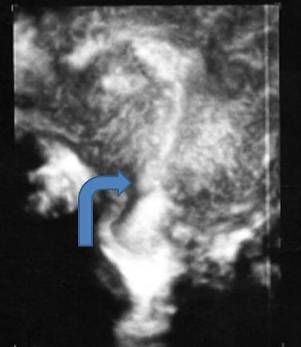Asherman’s Syndrome: Case Study
Asherman’s Syndrome is an extremely common and occasionally complicated disease entity. It takes many forms and can follow a routine D&C, a hysteroscopy, a delivery or even a surgical procedure such as a myomectomy or polypectomy. This case study from Dr. Alan Copperman reviews diagnosis and treatment options.
History:
A 32-year-old woman presents six months following the birth of her daughter. The pregnancy was uncomplicated, but following delivery a piece of placenta was apparently retained in the uterus.
When she continued to bleed eight weeks after delivery, her obstetrician performed an ultrasound and identified remaining tissue from the pregnancy. She took the patient to the operating room for a D&C.
She stopped bleeding, but now presents six months later with no menstrual bleeding. She is no longer breast feeding and is concerned. Her obstetrician gave her estrogen and then progesterone, and the patient still did not bleed.
She was then referred to our office for evaluation of potential Asherman’s syndrome. After taking a thorough history and performing a physical examination, we performed a transvaginal three-dimensional ultrasound. This showed a fairly normal uterine cavity and a good endometrial thickness of 8 mm, but it appeared there was a narrowing, if not complete scarring, of the lower portion of the uterus (Figure 1).

Figure 1: The 3D sonogram of a patient who presented with secondary amenorrhea following a D&C. 3D ultrasound reveals a normal cavity above a lower segment adhesion.
Diagnosis:
We had a lengthy conversation with the patient and her husband and discussed a variety of options, but ultimately we made the diagnosis of Asherman’s syndrome. Given that the scar tissue appeared largely confined to the lower segment, I was able to give the couple a good prognosis for recovery.
Treatment:
We took her to the operating room the following week and very gently were able to open the lower segment of the uterus using dilators and a narrow fiberoptic scope.
Once entry into the uterine cavity was successful, the anatomy appeared excellent and no cautery or resection was required. I left a balloon catheter in the uterus and sent her home on estrogen to thicken the lining and antibiotics to prevent an infection from bacteria coming up from the vagina. This catheter was removed in a postoperative check a week later and four weeks later the patient resumed normal menses. Three months later she fortunately was able to conceive and at present has a healthy ongoing pregnancy.
Discussion:
Our take home messages were that complications from delivery and retained placenta are not uncommon. Her obstetrician managed the complication and diagnosed the scar tissue. Her obstetrician approximately referred the patient to a reproductive endocrinologist experienced in Asherman’s syndrome. Fortunately, we were able to use a three-dimensional ultrasound to diagnose the area of the uterus that was affected, and delicately surgically managed the problem.
Asherman’s Syndrome is an extremely common and occasionally complicated disease entity. It takes many forms and can follow a routine D&C, a hysteroscopy, a delivery or even a surgical procedure such as a myomectomy or polypectomy. There continues to be a need for awareness among the obstetrical and gynecological community to be on the look out for this disease. Support groups exist on the internet and the patient advocacy organizations have come a long way in improving awareness of this disease.
There are different levels of expertise and surgeons who manage this disease, but ultimately optimal imaging ranging from saline hysterograms to formal hysterosalpingograms to comprehensive three-dimensional ultrasounds can all be informative. Optimal results can often be achieved with minimal intervention, and good outcomes are common.
Related Content:Discussing Asherman's Syndrome with Dr. Copperman
Newsletter
Get the latest clinical updates, case studies, and expert commentary in obstetric and gynecologic care. Sign up now to stay informed.
